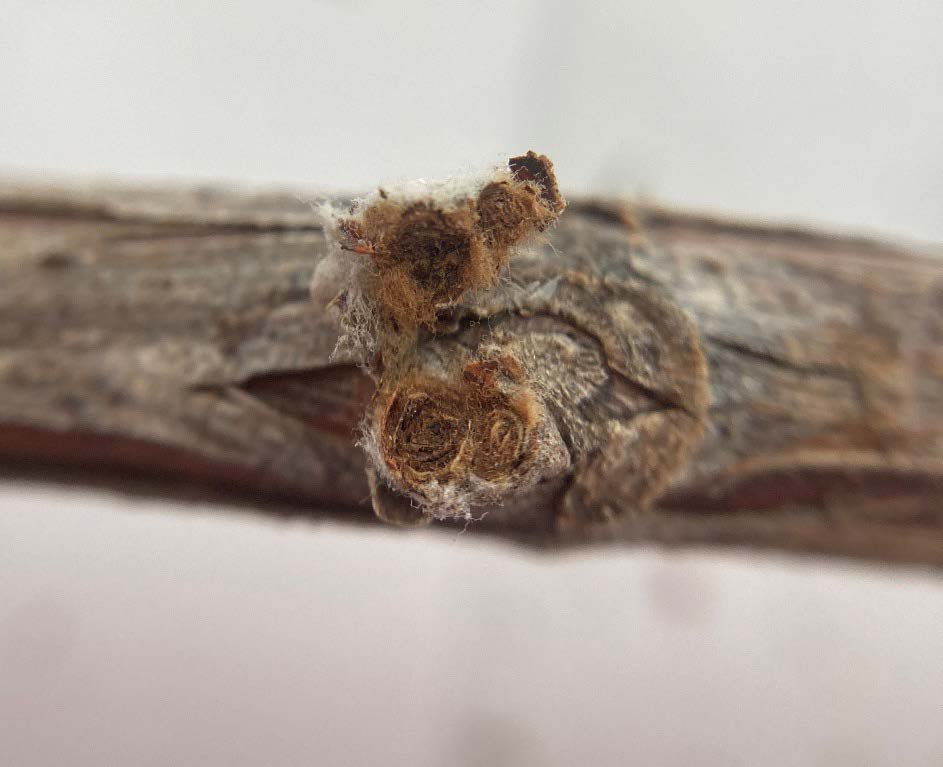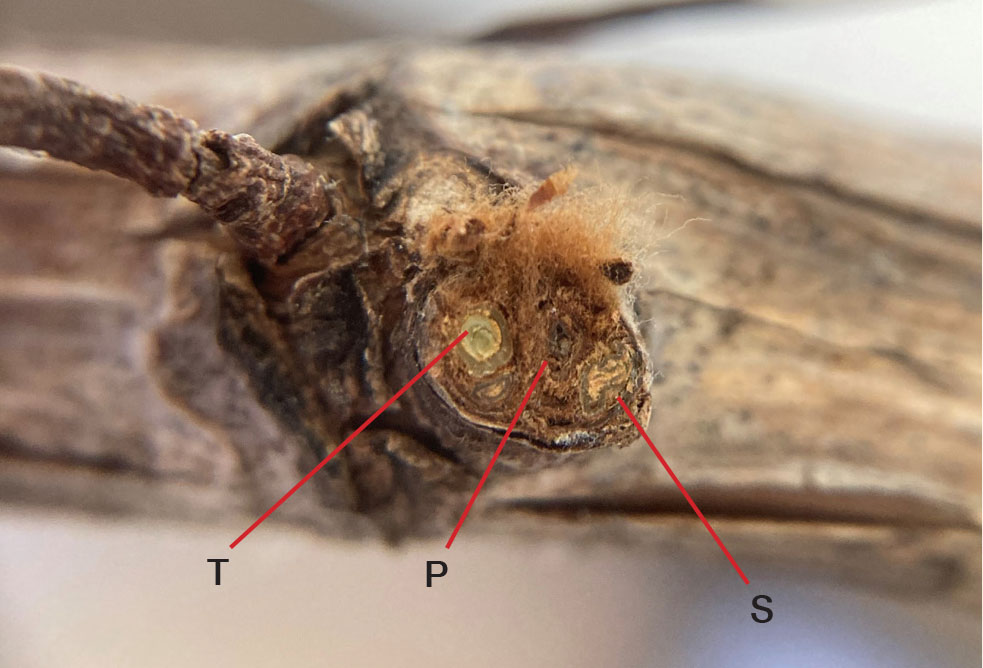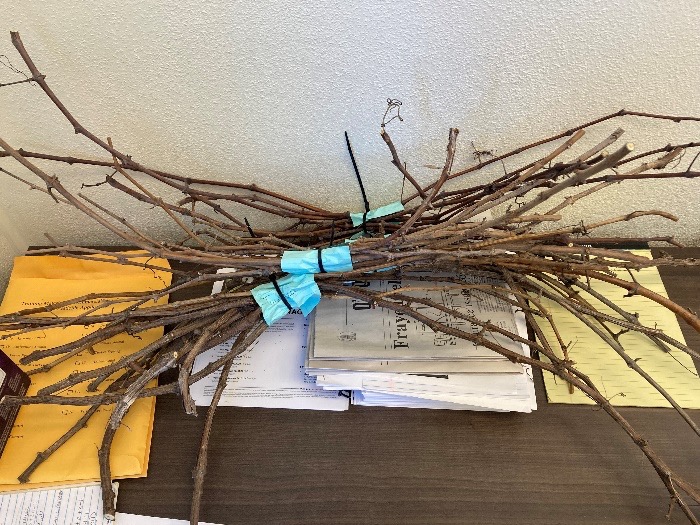Assessing Grapevine Bud Winter Injury
Vineyards that experience sub-zero Fahrenheit temperatures during dormancy are at risk for bud damage, and in Oklahoma, it is not unusual to see bud death in vineyards. Before pruning the vineyard, assess any possible bud damage, especially on cold-sensitive cultivars. Buds located on the ends of canes can be killed by freezing temperatures that dip below zero degrees in mid-winter, or by early spring frost. Bud assessment is a measurement in which dormant canes are collected and buds dissected to determine overall bud viability. If there is less than 25% bud mortality, prune as normal. If there is greater than 25% bud mortality, it is advisable to leave more buds during pruning. Leaving more buds on the vine after pruning can help increase the chances of producing a crop. The number of buds retained during pruning depends on the bud mortality rate calculated during bud assessment.
A grape bud is composed of three individual meristems, or growing points in which new shoots will arise. A primary, secondary and tertiary meristem compose a compound grape bud. A primary bud contains tissue for a shoot and two to three clusters. A secondary bud will produce a shoot and possibly a cluster. Cultivars differ in secondary bud fruitfulness. The tertiary bud is a survival bud and will only produce a shoot if the primary and secondary buds are damaged. In a live, healthy compound bud, the primary meristem will grow and be most fruitful. If the primary meristem is dead or damaged and the secondary meristem is alive, it will account for the new season’s growth. The secondary meristem is not as fruitful as the primary. The tertiary meristem is almost never fruitful and will grow as a survival effort to keep the grapevine alive, such as in the case of a late spring frost. If bud mortality is high, the tertiary meristem will support the vine vegetatively, but it is unlikely there will be any fruit to harvest later in the season. In an abundance of sunlight, sometimes both the primary and secondary meristems will sprout in which case mid-seasonshootthinningis recommended. (Image1shows a healthy bud. Image 2 shows a dead bud. Image 3 shows a dead primary bud with a live secondary bud.)
Image 1: A live, healthy bud.
Image 2: A dead bud.
Image 3: Primary meristem dead, secondary and tertiary meristem alive.
When selecting dormant canes for bud assessment, try to select one year-old canes growing from the cordon or spur that would be similar to what would be left to fruit this year (see Image 4). Be aware that cutting whole canes may eliminate future growing points from the spur or cordon, so try to select canes that would be pruned out otherwise. Dissecting buds toward the base of the cane closer to the cordon has higher priority of importance. This is because the buds closer to the cordon will be retained after pruning as growing points for the upcoming season (Image 5 shows a dormant vineyard).
Image 4: Selecting a cane for bud assessment.
Image 5: A dormant vineyard.
Here are the steps taken to assess bud damage in a vineyard. (Wait a few days after a freeze event to check bud mortality):
- Collect 10 canes of a specific grapevine variety and tag with an ID (Image 6).
- Make sure each cane has at least 10 buds.
- Bring the canes inside and let them acclimate to room temperature for 24 hours.
- After 24 hours, begin dissecting each bud with a razor blade.
- To dissect a bud, make a cross section cut across the top half of the bud. Make a second cross section cut in the bottom half of the bud as a duplication effort to ensure viability. Be careful not to cut below the bud and into the cane as this will skew the results (Image 7).
- Count the number of live buds and divide by the total number of buds sampled. This will give you a bud viability percentage (or death percentage depending on how you look at it). Remember that a live bud is always green (Image 1).
Image 6: A bundle of canes with ID tags.
Image 7: A cut cane showing that it’s alive. The green tissue shown is the xylem.
Leavingmore budsduringpruningmaymakethe canopy more cumbersome to manage during the growing season. The extra buds that grow into shoots will eventually lignify during dormancy, which will lengthen the spurs on the cordon. If the damage is such that the recommendation is to “minimally prune,” then it is unlikely that the vines will produce fruit during the growing season. The vine will grow vegetatively to photosynthesize in order to produce carbohydrates to rejuvenate its health.
To ensure healthy buds for next season, allow for plenty of sunlight penetration into the canopy during summer, as sunlight and adequate irrigation will help tremendously for vine health. A post-harvest application of nitrogen and potassium right after harvest, along with a generous amount of water, will help the grapevine to photosynthesize and store as many carbohydrates as possible before going into the next dormant season.
0 - 25% bud death = No change in pruning practices
26% - 50% bud death = Leave an extra bud or two when pruning
51% - 75% bud death = Leave double the number of buds from what you pruned last year
76%+ bud death = Minimally prune (Possibly even wait until the vine buds out before pruning)







